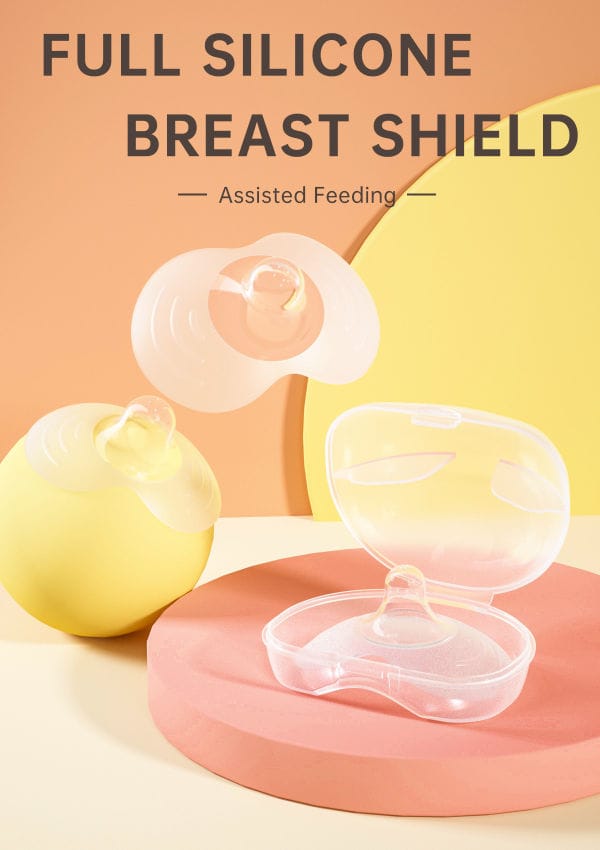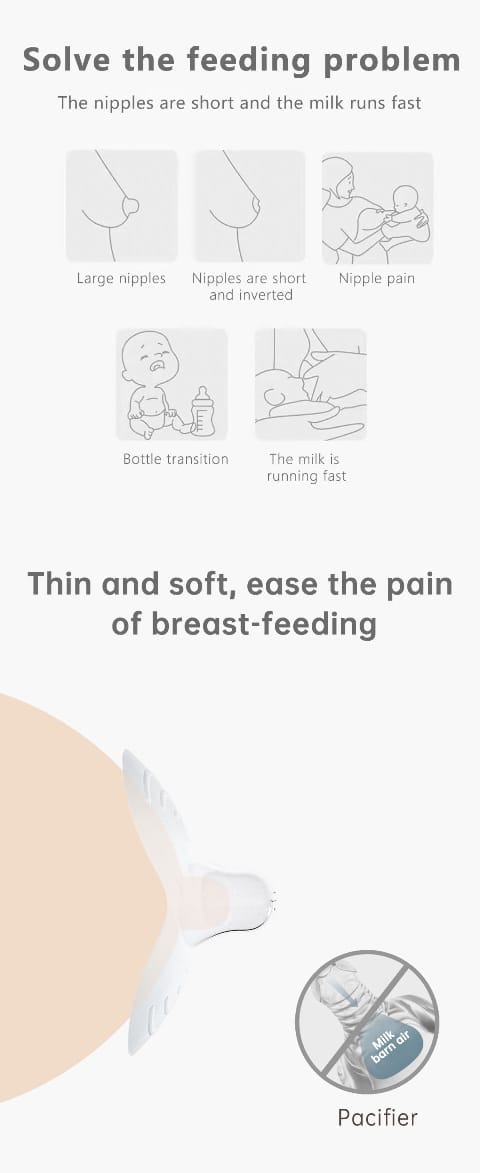Mumz & Babiez
1 Pair of Silicone Nipple Shields Protection for Breastfeeding With Clear Carrying Case - FREE DELIVERY
1 Pair of Silicone Nipple Shields Protection for Breastfeeding With Clear Carrying Case - FREE DELIVERY
22 in stock
- Our estimate delivery time is 3 - 5 working days.
- 7 - Day return policy. Please read our return policy for more information
Couldn't load pickup availability
- Material: food-grade silicone
- Age of use: 0 months or more
- Appropriate size: This can adhere to the nipple nicely, enabling skin-to-skin contact with the baby, suitable size to assist you in breastfeeding, from latch difficulties to flat and inverted nipples.
- Soft and safe to use: made of soft silicone, lightweight and full of toughness, soft and safe for your babies and you to use.
- Practical design: A proper curve allows the nipple protectors to fit a mother's nipple closely and firmly, wipe clean the nipple area with wet wipes before use, cover the breast with the protective cover, and hold it down with your hands before breastfeeding. It will not easily fall off.
- Keep clean and store: you will get a carrying case for convenient storage, and it is easy to keep clean and sturdy enough.
- Package Included - 1 Pair of Silicone Breastfeeding Nipple Protectors
A nipple shield is a flexible silicone or rubber cover that is placed over the nipple during breastfeeding. It has holes at the tip that allow the breast milk to flow through to the baby. Here are some key points about nipple shields:
This item cannot be returned, exchanged, or refunded due to its nature as a personal care product. Please ensure you select the correct options before placing your order.
Uses of Nipple Shields
1. Latching Difficulties: Nipple shields can help babies who have trouble latching onto the breast. This can include premature babies or those with oral anomalies like a tongue-tie.
2. Sore or Cracked Nipples: Mothers with sore or cracked nipples may use a shield to continue breastfeeding while reducing pain and allowing the nipples to heal.
3. Flat or Inverted Nipples: Nipple shields can aid mothers with flat or inverted nipples by providing a structure that the baby can more easily latch onto.
4. Overactive Letdown: Mothers with a strong letdown reflex that can cause the baby to choke or pull away might use a shield to moderate the flow of milk.
Benefits
- Comfort: Reduces pain from sore, cracked, or sensitive nipples.
- Improved Latch: Helps babies who struggle to latch directly onto the breast.
- Continued Breastfeeding: Enables mothers to continue breastfeeding when they might otherwise need to stop or switch to bottle feeding.
Challenges and Considerations
- Dependency: Babies can become dependent on the shield and may struggle to transition back to the bare breast.
- Milk Supply: Some research suggests that nipple shields can potentially reduce milk transfer, which might affect milk supply if not monitored.
- Hygiene: Nipple shields require careful cleaning to avoid infections.
Proper Use and Transition
1. Consultation: Work with a lactation consultant to ensure the correct size and use of the shield.
2. Application: Moisten the shield with a bit of water or breast milk to help it adhere to the breast.
3. Positioning: Ensure the baby’s mouth covers both the nipple and a good portion of the areola.
4. Transition: Gradually wean the baby off the shield by offering the breast without the shield at the beginning of a feeding session or in between feedings.
Care and Maintenance
- Cleaning: Wash the nipple shield with warm, soapy water after each use and sterilize regularly.
- Inspection: Check for any signs of wear and tear, such as holes or thinning, and replace as necessary.
Share
















